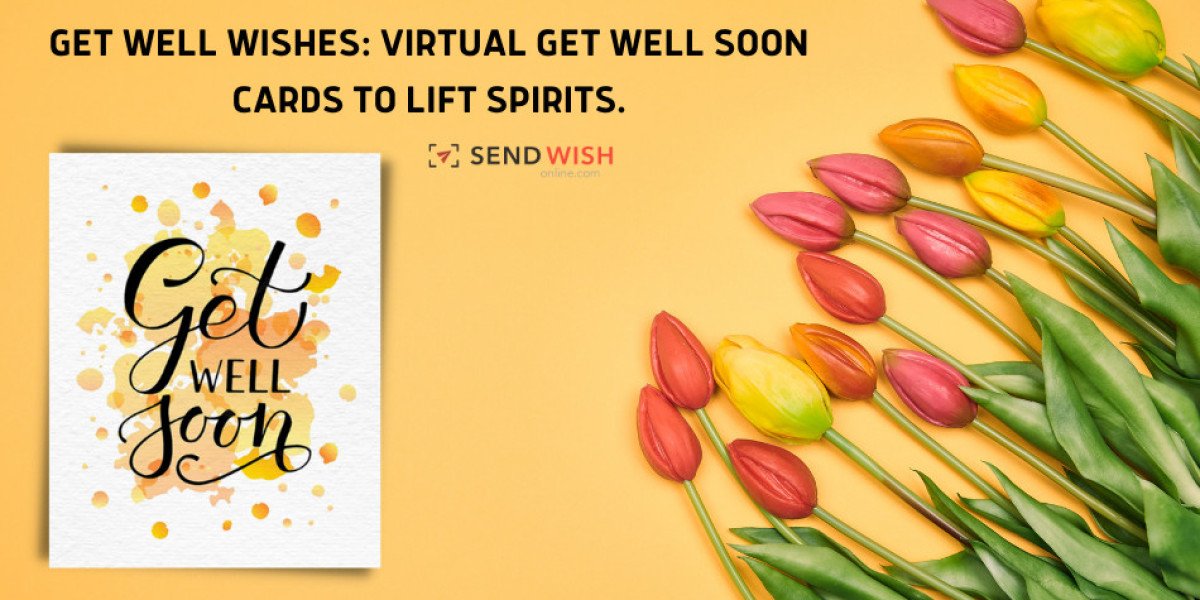Introduction:
In our fast-paced, digital age, it's easy to assume that traditional forms of communication have lost their significance. However, one enduring aspect of human connection remains steadfast—the humble get well soon card. Across generations and cultures, these simple tokens of well-wishes have maintained their appeal and continue to bring comfort to those in need. In this article, we will explore the rich history and enduring appeal of get well soon cards, examining their origins, evolution, and the reasons behind their continued popularity.
The Origins of Get Well Soon Cards:
The concept of expressing well-wishes and offering solace to the sick dates back centuries. In ancient times, individuals would send messages of healing and support through various means, such as personal letters, tokens, or even through messengers. However, the formalization of get well soon cards as a distinct medium of communication came about in the 19th century.
The Rise of Get Well Soon Cards:
During the Victorian era, sending greeting cards became increasingly popular, driven by advances in printing technology and improvements in postal services. This period witnessed a cultural shift towards sentimentalism and emotional expression, with individuals seeking heartfelt ways to convey their emotions. Get well soon cards emerged as a natural extension of this sentiment, providing a tangible expression of care and concern for ailing loved ones.
The Evolution of Get Well Soon Cards:
As the 20th century unfolded, get well soon cards evolved in terms of design, content, and accessibility. Advances in printing techniques allowed for intricate illustrations, vibrant colors, and the inclusion of thoughtful messages. The availability of pre-made cards in stores made it easier for people to find and send appropriate greetings promptly. The emergence of electronic cards in the digital age further expanded the reach and convenience of sending well-wishes.
The Emotional Significance:
The enduring appeal of get well soon cards lies in their emotional significance. Such cards offer a tangible reminder that friends, family, and well-wishers are thinking of the recipient during a difficult time. The physical act of selecting, writing, and sending a card conveys a sense of effort, personal touch, and empathy that cannot be replicated by other forms of communication. The heartfelt messages within these cards provide solace, encouragement, and healing energy, offering a source of emotional support to the recipient.
Personalization and Connection:
Get well soon cards offer a platform for personalization, allowing individuals to express their unique sentiments and well-wishes. The act of writing a personalized message fosters a deeper connection between the sender and the recipient. Whether through a heartfelt anecdote, a shared memory, or a simple expression of love and care, these cards provide an opportunity to strengthen bonds and show genuine concern.
The Physicality and Tangibility:
In the digital age, where communication is often intangible and fleeting, the physicality of get well soon cards holds a special allure. Holding a card in hand, feeling its texture, and reading the handwritten notes evokes a sense of warmth and intimacy. The ability to display these cards prominently in a hospital room or at home serves as a visual reminder of the support and well-wishes received, acting as a source of inspiration and motivation for the recovery process.
Therapeutic Value:
Free get well cards possess therapeutic value for both the sender and the recipient. For the sender, the act of selecting or creating a card, choosing the right words, and expressing heartfelt emotions can provide a sense of emotional release and catharsis. It allows them to actively participate in the healing process and offer support in a meaningful way. For the recipient, receiving these cards can uplift spirits, boost morale, and contribute to a positive mindset, which has been shown to have a beneficial impact on recovery.
Cultural and Social Significance:
Get well soon cards transcend cultural boundaries and are present in various societies around the world. While specific designs, customs, and rituals may vary, the underlying intention—conveying care and well-wishes—is universal. In some cultures, sending get well soon cards is deeply ingrained in social norms and etiquette, symbolizing empathy, compassion, and solidarity in times of illness.
Symbol of Community and Belonging:
Get well soon cards serve as a tangible representation of a supportive community rallying around an individual in need. They offer a sense of belonging and remind the recipient that they are not alone in their struggle. The cards become a physical manifestation of the network of people who care for their well-being, offering comfort and strength during challenging times.
Connection to Nostalgia and Tradition:
The act of sending get well soon cards taps into a sense of nostalgia and tradition. Many people recall receiving cards from loved ones during their own illnesses, creating lasting memories and associations with comfort and care. Continuing this tradition by sending cards to others reflects a desire to preserve and pass on these meaningful gestures of support.
Escape from Digital Overload:
In an era dominated by digital communication, get well soon cards offer a welcome respite from the constant stream of emails, text messages, and social media notifications. Holding a physical card provides a break from screen time and allows for a more focused and mindful connection with the message and the sender. It offers a chance to disconnect from the virtual world and engage with a tangible expression of thoughtfulness.
Conclusion:
Throughout history, get well card have remained a steadfast expression of love, care, and support during periods of illness. Their enduring appeal lies in their ability to offer comfort, emotional connection, and a tangible reminder of human compassion. Despite the rise of digital communication, the personal touch and sentimental value of physical get well soon cards continue to hold a special place in our hearts. As long as there are individuals in need of healing, the timeless tradition of sending get well soon cards will persist, bridging the gap between hearts and nurturing the human spirit.







